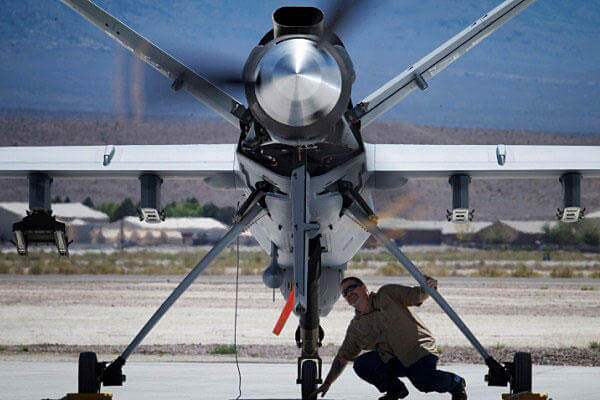The U.S. has boosted the daily number of surveillance flights over Iraq to 50 in the effort to assess the continuing threat posed by Islamic extremists and ready a possible U.S. response, Pentagon officials said Tuesday.
Last week, the U.S. was flying 30-35 manned and unmanned flights over Iraq to gain intelligence on the advances of the militants of the Islamic State of Iraq and the Levant (ISIL).
Pentagon officials said that most of the unmanned flights were unarmed but some Predator drones flying over Baghdad were equipped with Hellfire missiles to protect the U.S. Embassy and the airport.
In the ongoing buildup of U.S. forces in the region, about 640 of the 775 troops authorized by President Obama have arrived in Iraq.
The troops were sent to bolster Embassy security and also to set up Joint Operation Centers in Baghdad and northern Irbil to assess the ISIL threat and advise the Iraqi security forces.
At a Pentagon briefing, Rear Adm. John Kirby, the Pentagon press secretary, said the assessment stage of the mission by Special Forces troops working out of the JOCs was drawing to a close. The next step would be to advise the Iraqis on a course of action.
Obama and Defense Secretary Chuck Hagel have said that U.S. support for the Iraqis, possibly including airstrikes, would depend on Baghdad solving its internal political problems and forming a unity government representative of the Sunni, Shia and Kurdish communities.
The U.S. has repeatedly ruled out ground combat. "We're taking a very measured, deliberate approach," Kirby said.
While the U.S. was assessing its support for Iraq, neighboring Iran has backed the mostly-Shia government of Prime Minister Nouri al-Maliki.
"We have no indications that Iranian ground forces are inside Iraq," Kirby said, but some Iranian operatives were present and Tehran has also been boosting military supplies to Iraq.
"We understand that Iraq is a sovereign nation and has that right" to choose its allies, Kirby said of the Iranian involvement.
The 640 troops sent to Iraq thus far represent a small fraction of the estimated 31,000 U.S. troops and sailors in the region.
Since ISIL fighters invaded from Syria and took over a large swath of northern and western Iraq, the Navy has moved the aircraft carrier George H.W. Bush and her two escort warships -- the cruiser Philippine Sea and the destroyer Truxtun -- into the Persian Gulf.
The Bush strike group has been joined by the amphibious assault ship Bataan with 1,000 Marines aboard, the transport dock ship Mesa Verde with 550 Marines aboard, and the destroyer O'Kane.
The Army has the 3,300 troops of the 2nd Combat Brigade of the 4th Infantry Division in Kuwait, and another 1,000 troops in Jordan. The troops in Jordan are protected by a detachment of F-16 fighters and Patriot anti-missile batteries.
There are about 35,000 U.S. troops in the Middle East. That total includes an Army brigade and support troops in Kuwait. In Jordan, there is a detachment of F-16s, a Patriot anti-missile battery and a headquarters group.
In addition, the Air Force has a total of about 90 fighters and attack aircraft at bases in Turkey and Qatar.
-- Richard Sisk can be reached at Richard.Sisk@monster.com.





























